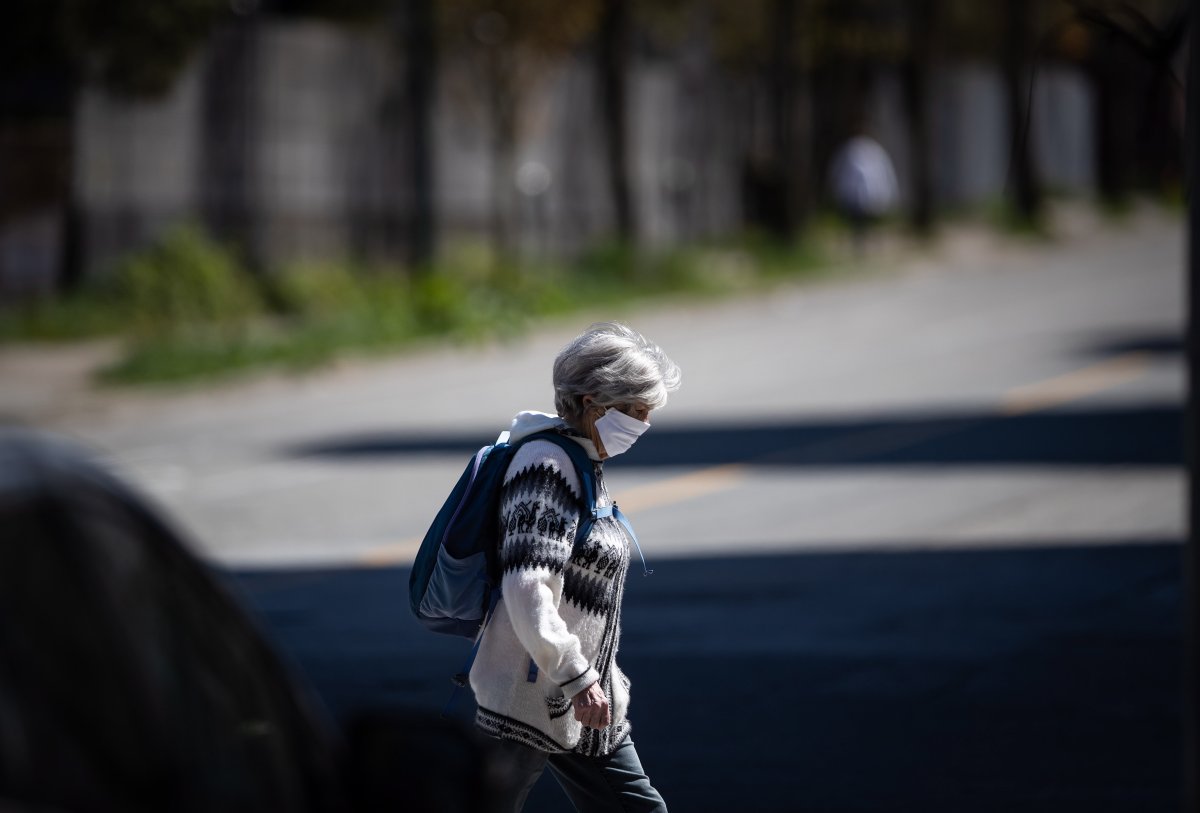The Middlesex-London Health Unit says it now “strongly recommends” that all residents going out to public spaces wear a non-medical face mask or covering before doing so to curb the spread of the novel coronavirus.

The health unit updated its COVID-19 public guidelines this week, strengthening its language on the issue of masks, which beforehand largely asked people to consider wearing one.
It comes as community transmission of the virus continues in the region, and comes as most areas of the province move into Stage 2 of the province’s reopening framework — London and Middlesex included.
In an interview with 980 CFPL’s Craig Needles on Thursday, Dr. Chris Mackie, the region’s medical officer of health, said the change came in part after new research from Italy and Germany dispelled the theory that people may be less careful about social distancing when wearing a mask.

The studies found that, on average, people who wear masks were less likely to violate the two-metre barrier, he said.
“Actually, there’s a really cool signal that goes from the person wearing the mask to the people around them that they want space. So people around them are more likely to give them space.”
Another factor in issuing the stronger language surrounds what appears to be the declining use of masks in the region in general, he said.
“We don’t have good indicators — it’s really anecdotal — but that’s how it appears. This is a tool that can be helpful in containing coronavirus, so we really hope the public is taking that up.”
Though the health unit stopped short of mandating masks and face coverings, such a move, while not being imminently considered, isn’t entirely off the table.
If Londoners don’t heed the mask recommendation, and the rate of new COVID-19 cases remains steady or trends slightly upward, the health unit may “consider encouraging employers or certain facilities to make masks mandatory,” Mackie said during Wednesday’s COVID-19 media briefing.
“And of course I may consider, at some point, an order from the medical officer of health,” he added.
- Canadian man dies during Texas Ironman event. His widow wants answers as to why
- Invasive strep: ‘Don’t wait’ to seek care, N.S. woman warns on long road to recovery
- ‘Sciatica was gone’: hospital performs robot-assisted spinal surgery in Canadian first
- ‘Super lice’ are becoming more resistant to chemical shampoos. What to use instead
“But those are the things we’ll be watching. Are people using masks as appropriate? And are our numbers able to trend down in spite of the opening of the economy?”
Mackie noted in a later interview that the matter of making face coverings mandatory had to be considered very carefully, along with the implications of such a move.
“We’re not there at this point, we’re trying other routes. But we’re not leaving that off the table either,” he said.
“One of the things that is crucial from both a legal and a human rights perspective is that we consider the use of other alternatives before using force measures.”
Mask guidelines vary by location.
Some areas, like Guelph and Wellington County, have mandated their use in indoor commercial establishments, while other municipalities, like Brampton, Mississauga, Ottawa, and Toronto, have mandated their use on public transit.
In London, face coverings aren’t mandatory on buses, but are still strongly recommended by the transit commission.
And flyers in Ontario, and across the country, have been required since April to wear face coverings. Earlier this month, that rule was expanded to flight crews and airport workers.
All involve spaces where physical distancing poses a challenge, and where potentially harmful droplets — expelled by talking, sneezing and coughing — may linger for longer periods.
The patchy rules, coupled with the region-by-region opening of the province, prompted the mayor of Markham, Ont. to recently call on the Ford government to make face coverings mandatory in enclosed indoor spaces where physical distancing isn’t possible.
Some businesses have implemented “no mask, no service” policies, and Premier Doug Ford has remarked in the past that companies have the right to ask customers to wear a face covering or take their business elsewhere.
Ford said he would speak with Frank Scarpitti this week about his province-wide proposal, but noted Tuesday that it wasn’t possible to “police 14 and a half million people.”
At any rate, wearing masks will have to be more commonplace if Canadians want the economy, and society at large, to bounce back, Mackie says.
“As we significantly increase the number of contacts we have in the community, it’s got to be part of the picture, otherwise we will continue to see this continue on at a slow burn rate.
Earlier this month, the World Health Organization broadened its recommendations for face masks, advising that in areas where the virus is spreading, people should wear them when social distancing isn’t possible.
Part of the reason was the increasing evidence COVID-19 can be spread by people before they have symptoms, a WHO infection control expert said.
— With files from Global News’ Ryan Rocca, The Associated Press and The Canadian Press









Comments